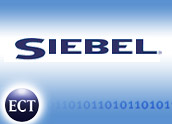
In the last U.S. presidential election the candidates clashed on the issue of privatizing the Social Security system.
I’ll leave the political debate to the professional politicians, but I would like to address this matter from the standpoint of millions of U.S. workers. Many of them are already banking on their 401(k)s as the largest part of their retirement savings, and they barely have enough time to check their balances, much less make insightful investment decisions.
There are 42 million Americans holding an estimated $1.9 trillion in assets in their 401(k)s, and they tend to rely on the simple guided selling interfaces that investment firms had five or more years ago. Overly simplistic views of risk vs. return and incomplete investment selection tools were commonplace, leaving many individual investors shortchanged relative to the expertise available to them, for free, from these firms.
Think of what that the Bush Administration proposal will do to the total assets held in consumer-managed investments. The President’s plan today will give everyone with over $5,000 in their Social Security investment accounts a broad range of investment options to select from. With a minimum balance that low, part-time workers will have the opportunity to manage their investments just as 42 million working Americans do with their 401(k)s.
Hosted Analytics, Service and Guided Selling
All these Americans can’t be expected to pour through prospectuses or decide to become financial planning experts overnight. What’s needed is a hosted, secure platform that includes strong analytics tools for evaluating investment scenarios. Most of all, they need guided selling interfaces that treat them as individuals rather than pushing them into one of four or five convenient categories based on risk profile. The biggest travesty of the previous generation of online tools is that there was no online customer service, and investment portfolios were pushed around like Lego blocks instead of being treated as crucial personal assets.
Investment firms such as Fidelity, T. Rowe Price, Charles Schwab and others have revamped their online analytics, service and guided selling tools to include investment and tax planning, as well as pro forma analysis of investment decisions.
All these investment firms have built their applications for the educated individual investor — if you know what you want to do and how you want to do it, these firms and their online tools are for you.
But what about the many Americans who know they have a 401(k) but don’t take the time to learn how to use the online tools — assuming they’re available — that accompany their accounts? And now the proposed changes to Social Security would throw still more responsibility into their laps.
Many people might consider it exhilarating to have such control over their Social Security funds. They want the chance to outperform the median return on 401(k)s, which averages 6.35 percent, according to Watson Wyatt Worldwide.
The Power of Privatization
Put all the pieces of this market dynamic together and you have the makings of the next Salesforce.com. Why? Because every working American, every week, will check their Social Security investment results.
Let’s review these dynamics to illustrate how powerful privatization will be for CRM overall and analytics and guided selling specifically:
- Social Security taxes will have to be managed separately from 401(k)s. There are legal requirements that the Social Security Administration continue to be the trustee of the funds, so the money can’t just be released to investment firms.
- The change will require a state-of-the-art guided selling platform for personal investments. The lower the threshold amount for individually managing Social Security taxes, the more Americans who will need guidance on how to select investments. It’s a no-brainer that this will be on a hosted platform, as the IRS’s tax-filing system is. The guidance that is delivered will help determine the success of the investments of millions of Americans.
- Employers are not going to pay for investment advisors for everyone. That’s one of the perks C-level executives get in many large corporations, and some companies are even starting to offer this to middle managers. Many companies provide this benefit when 401(k) participation is below 50 percent because they can afford it.
- Investment firms are only reaching the most dedicated investors. There is a huge gulf of knowledge between the majority of Americans with 401(k)s and the most committed investors. The analytics, service and guided selling tools have improved dramatically but are still not suited for the millions of Americans who will be managing their Social Security funds.
Bottom line: Privatizing Social Security is going to create another salesforce.com in the investment world, and along with its creation there is going to be a rapid improvement in analytics, service and guided selling applications aimed at the investment community.
Louis Columbus, a CRM Buyer columnist, is a former senior analyst with AMR Research. He currently works in the software industry.



































